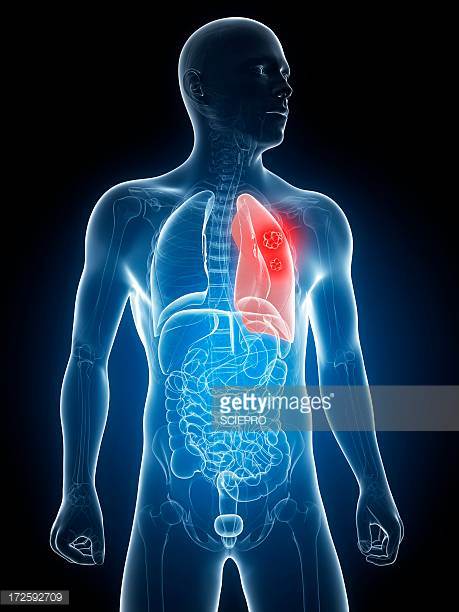Researchers have now discovered that circulating lung cancer tumor cells combine, making previously chemo-sensitive cells into chemo-resistant cell complexes
For those people who respond to chemotherapy consider low-dose anti-angiogenic metronomic chemotherapy for the rest of your life. According to the study linked and excerpted below, those lung cancer patients who achieved remission after induction therapy might stay in remission.
Unfortunately, a cancer patient would have a difficult time taking toxic therapy for the rest of his or her life. This therapy would only be possible if the low dose, anti-angiogenic metronomic chemo was NON-TOXIC.

This is basically what I have been doing for years now. I have remained in complete remission from my “incurable” cancer since 1999. Evidence-based anti-lung cancer nutrition, supplementation, bone health, lifestyle therapies and more are all anti-angiogenic therapies to keep my cancer under control.
I am both a cancer survivor and cancer coach. Have you been diagnosed with lung cancer? What stage? Please scroll down the page, post a question or comment and I will reply to you ASAP.
Thank you,
David Emerson
- Cancer Survivor
- Cancer Coach
- Director PeopleBeatingCancer
Recommended Reading:
“Approximately one year after successful treatment with cytotoxic chemotherapy and radiotherapy, patients with advanced Small Cell Lung Cancer (SCLC), which primarily affects heavy smokers, generally relapse with recurrence of tumors that are resistant to further chemotherapy…
At this point, the affected patients usually only have a few months to live. The reason for this was hitherto unknown. Researchers have now discovered that circulating tumor cells combine, making previously chemo-sensitive cells into chemo-resistant cell complexes...
The circulating tumour cells aggregate to protect themselves from chemotherapy — like a circle of covered wagons — thereby preventing any active agents from entering,” says Hamilton, describing the process…”
“Toxic effects and chemoresistance are major hurdles in chemotherapy and to avoid these problems caused by traditional chemotherapeutic regimens, a new modality of drug administration called “metronomic chemotherapy” has emerged.
Such regimen involves the frequent administration of conventional chemotherapeutic agents at very low doses to target activated endothelial cells in tumors, the advantages of which include minimal adverse effects and a rare chance of developing acquired drug resistance.
Previously it was thought that they act by targeting angiogenesis, but recently additional mechanisms have been discovered which has established metronomic chemotherapy as a type of multi-targeted therapy. The knowledge gained from the preclinical studies of metronomic chemotherapy, along with clinical experience, will help to design better therapeutic protocols against cancer.
Detailed pharmacogenomic and pharmacoproteomic studies on tumor endothelial cells and large multi-centered clinical trials, integrating bio-marker analyzes, are needed to investigate and validate the best treatment combinations for each tumor type and patient population…”
“The progression of cancer is associated with alterations in the tumor microenvironment, including changes in extracellular matrix (ECM) composition, matrix rigidity, hypervascularization, hypoxia, and paracrine factors.
One key malignant phenotype of cancer cells is their ability to resist chemotherapeutics, and elements of the ECM can promote chemoresistance in cancer cells through a variety of signaling pathways, inducing changes in gene expression and protein activity that allow resistance.
Furthermore, the ECM is maintained as an environment that facilitates chemoresistance, since its constitution modulates the phenotype of cancer-associated cells, which themselves affect the microenvironment. In this review, we discuss how the properties of the tumor microenvironment promote chemoresistance in cancer cells, and the interplay between these external stimuli. We focus on both the response of cancer cells to the external environment, as well as the maintenance of the external environment, and how a chemoresistant phenotype emerges from the complex signaling network present…”




